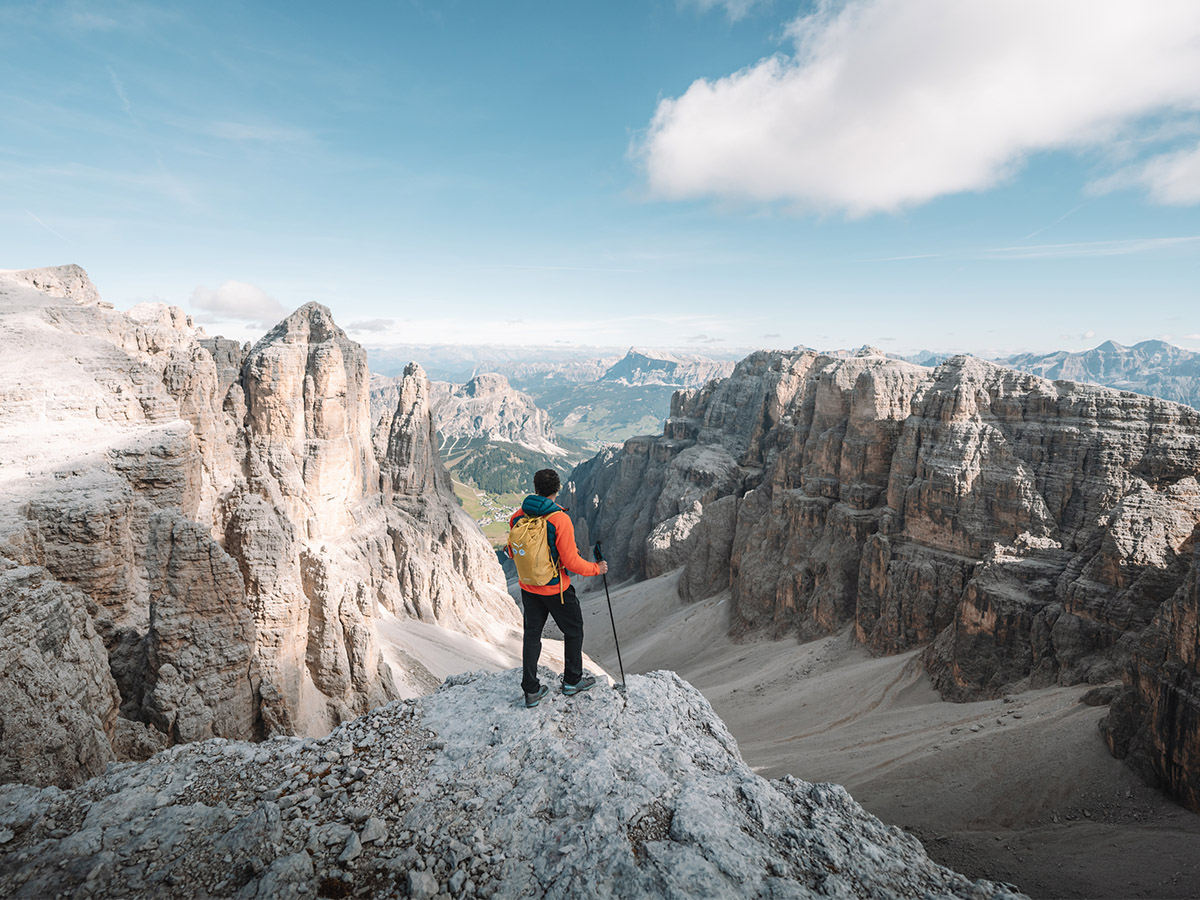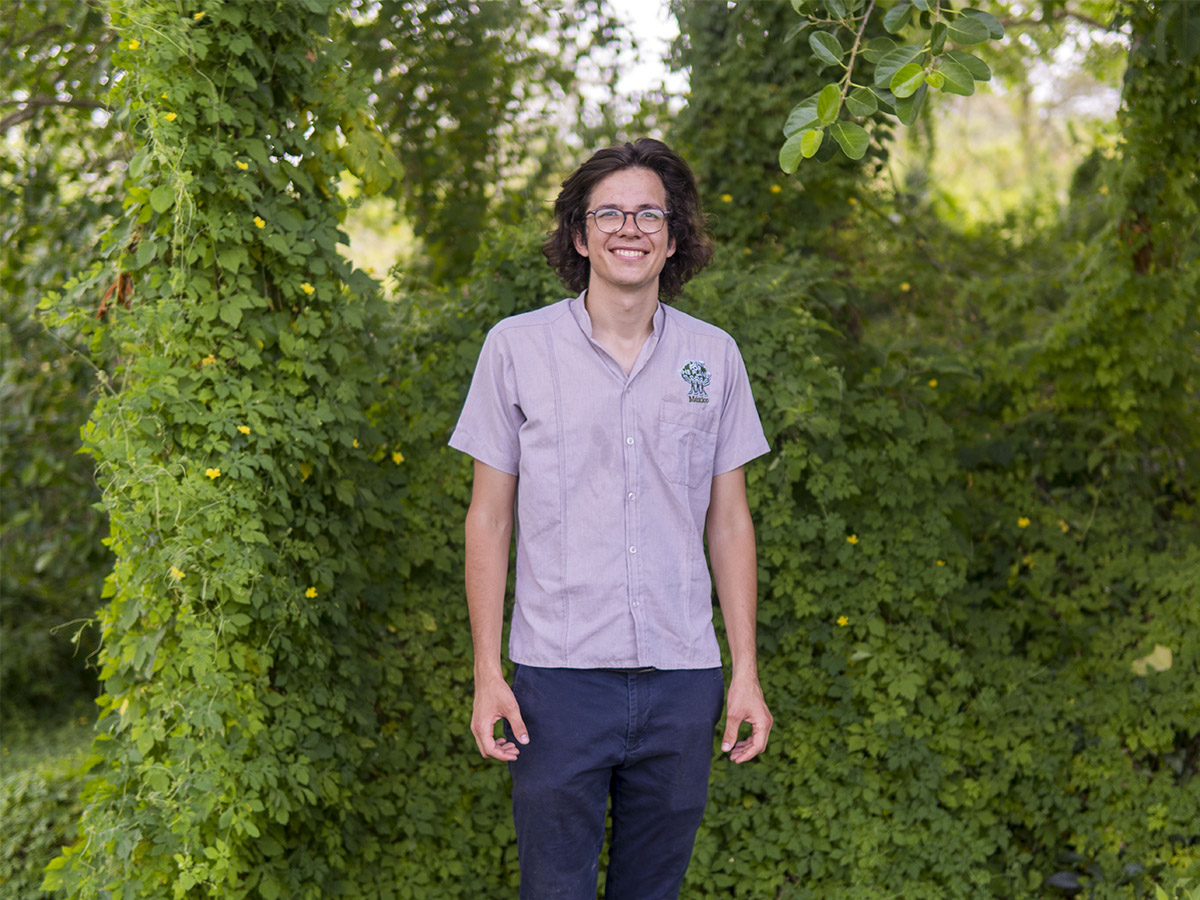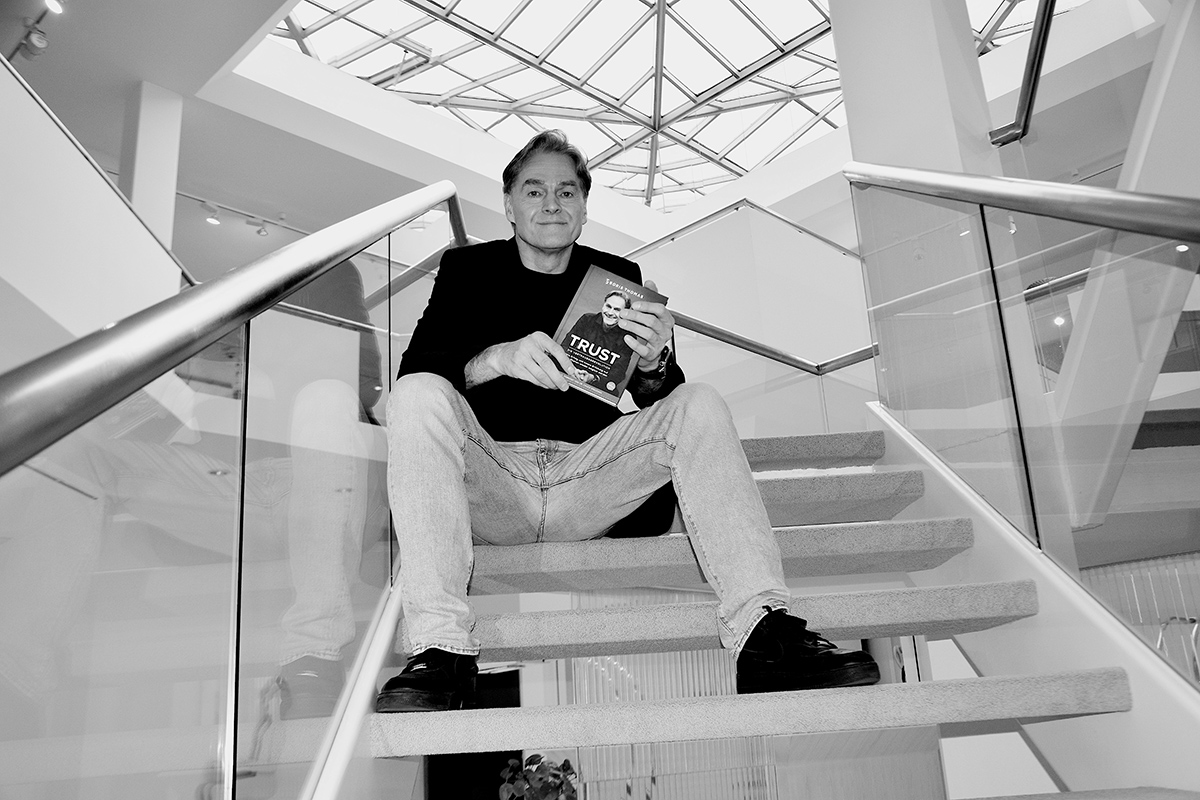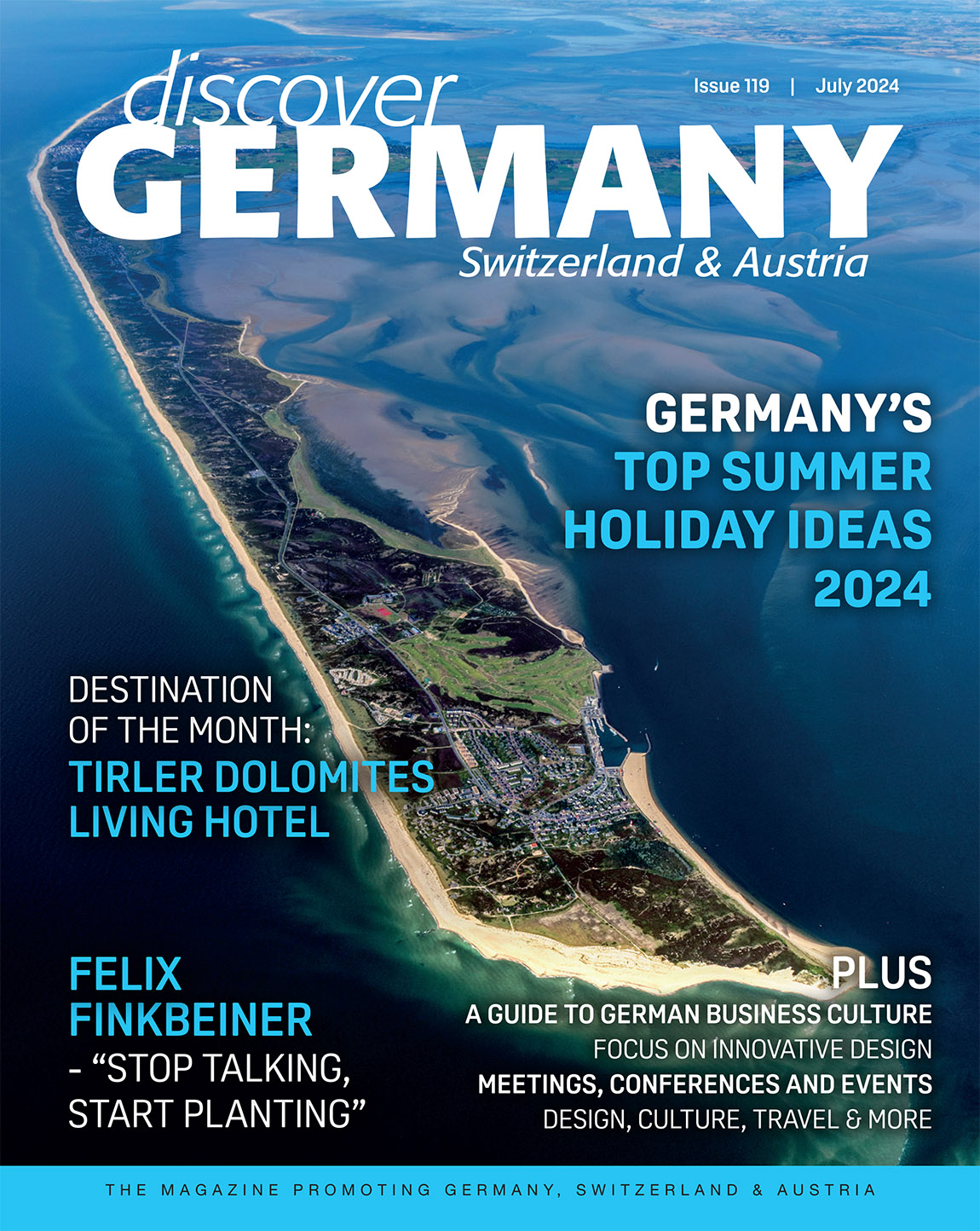Wibke Carter: Oh my Gstaad
TEXT: WIBKE CARTER
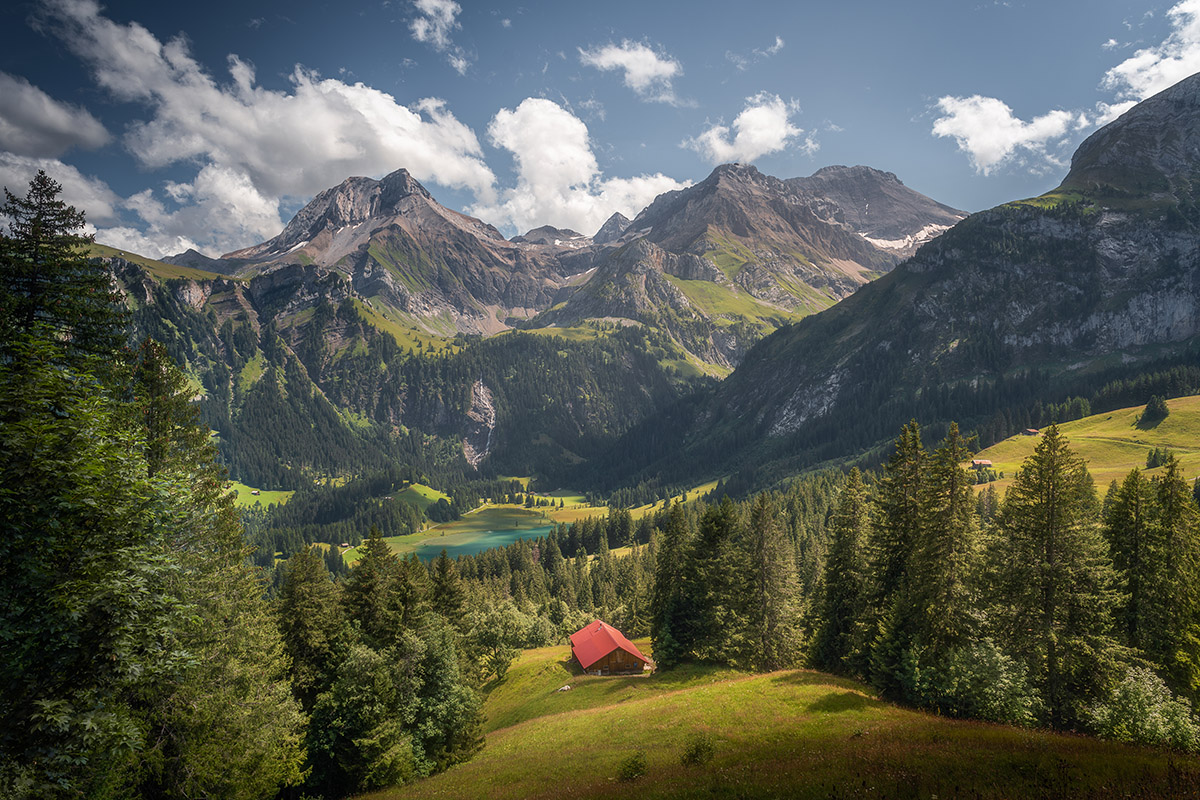
Swiss Mountains. Photo: Switzerland Tourism
Those wanting to flaunt wealth and celebrity status go to St. Moritz. Those looking for peace and quiet despite having both, spend their holidays in Gstaad. Wibke Carter travels to the famous Swiss mountain village where discretion is everything.
In Switzerland, Bernese people have a reputation as being clumsy and slow. Nevertheless, the residents of the finest resort towns in the Bernese Oberland are proud not to be among the fastest. In fact, ‘Come up and Slow down’ is the motto in Saanenland, a region of nine chalet villages alongside Gstaad, located at an altitude of between 1,000 and 1,400 metres. The world may be spinning faster and faster, but here the hectic pace has not yet arrived.
“People have been coming to Gstaad to enjoy the fresh Alpine air for over 100 years,” says Marie Froger. She works as the Head of Sales for the hotel Le Grand Belleveue which was originally built in 1912 as a Cure House and Spa, and now boasts the biggest spa in the region with 3,000 square meters. “Every day of their stay, guests become more and more relaxed.”
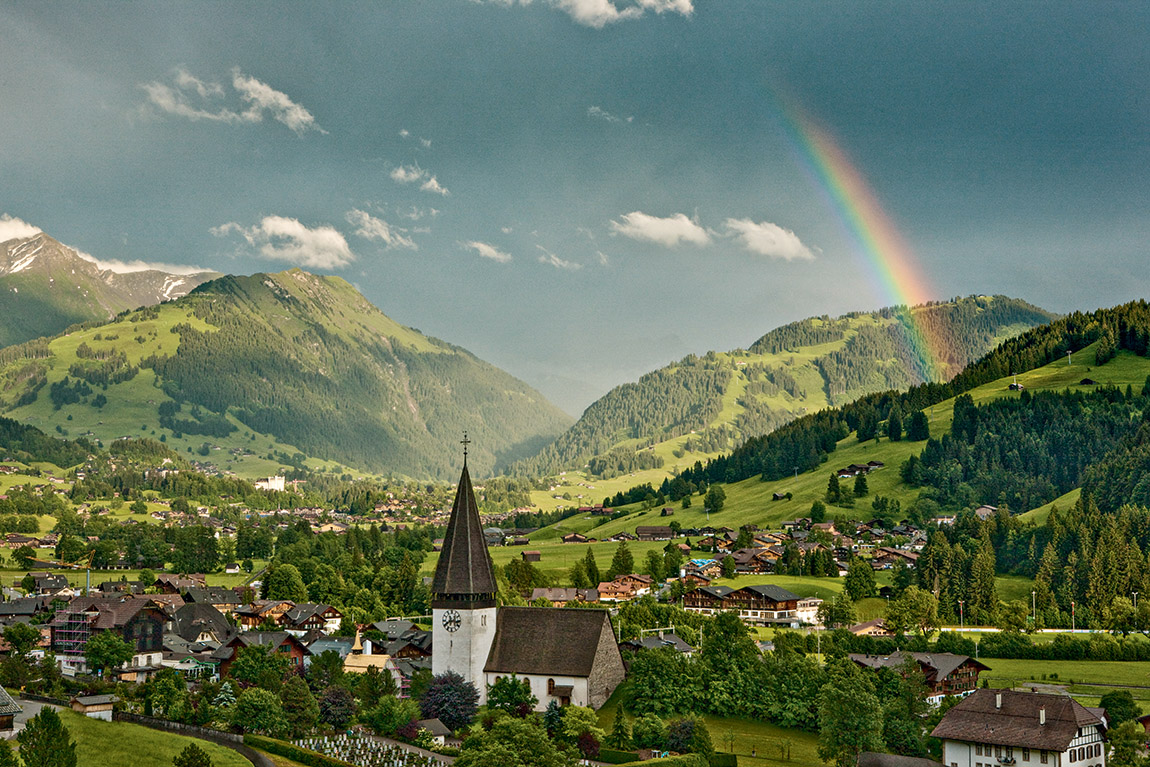
View over Gstaad with rainbow. Photo: Switzerland Tourism
Staying incognito
While St. Moritz is for the celebrities who want to be seen, Gstaad welcomes the rich and famous who prefer to remain anonymous. This comparison with the posh resort in Graubünden suits the Saanen quite well – after all, it suggests down-to-earthness and genuineness despite the glitz and glamour of the guests. High nobility, businessmen and artists don’t splurge here. Less is often more, especially for those who already have everything. “From the outside, the chalets of the super-rich hardly look any different from the old houses of the peasants,” says tour guide Anita Roth. The reason lies in the strict building regulations intended to preserve the uniform appearance of the village with its farmhouses, some of which date back to the 15th century. “But if you look closely, you can see the entrances to private underground garages below some of the houses,” reveals Roth.
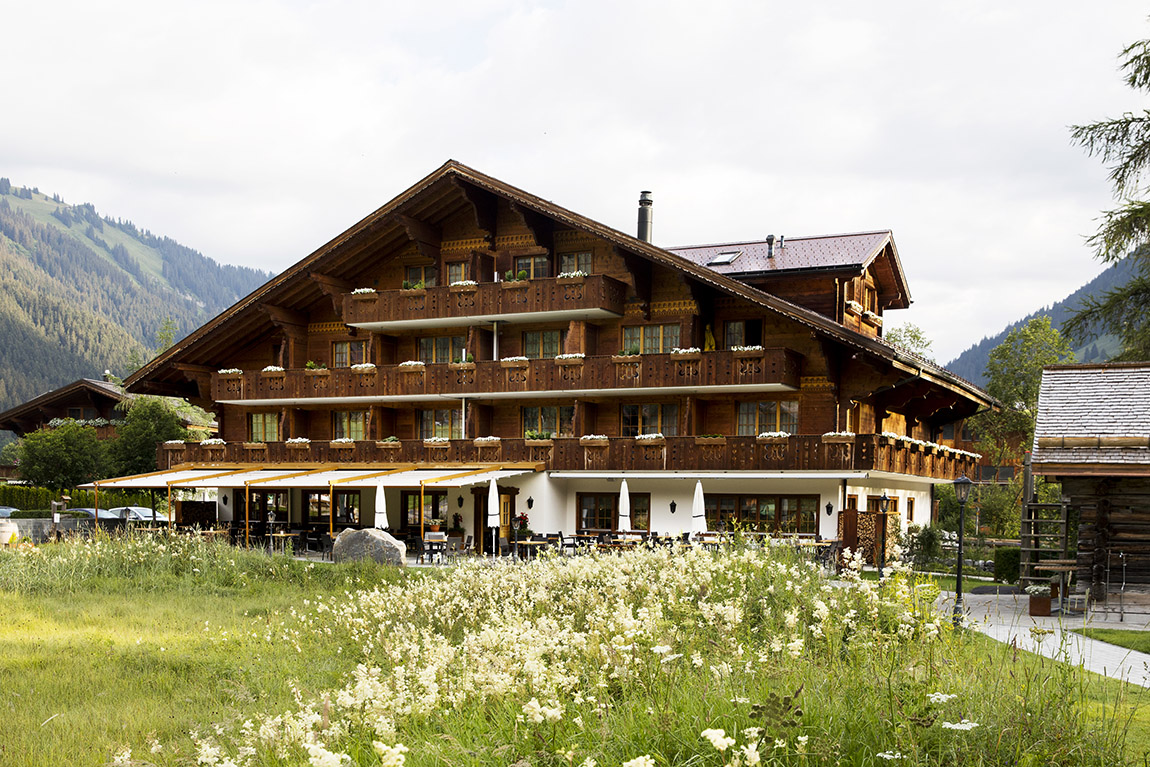
Traditional wooden chalet Photo: Switzerland Tourism
The beginnings of the resort town south of the Swiss capital Bern are rather humble: at the end of the 19th century, Gstaad was one of many tranquil mountain villages. People farmed for vegetables, and lived with the seasons: moving to the Alps in spring, continuing to the higher Alps in summer, coming down with the animals in autumn and spending winter in the valley. Due to a surplus of milk, the farmers started making cheese.
But then the railroad connection came and with it Le Rosey. The elite boarding school has been moving from its headquarters on Lake Geneva to the Bernese Oberland every winter since 1917. Many parents of students bought exclusive chalets in the Saanenland and spent the winter vacations in an environment that quickly adapted to its new residents.
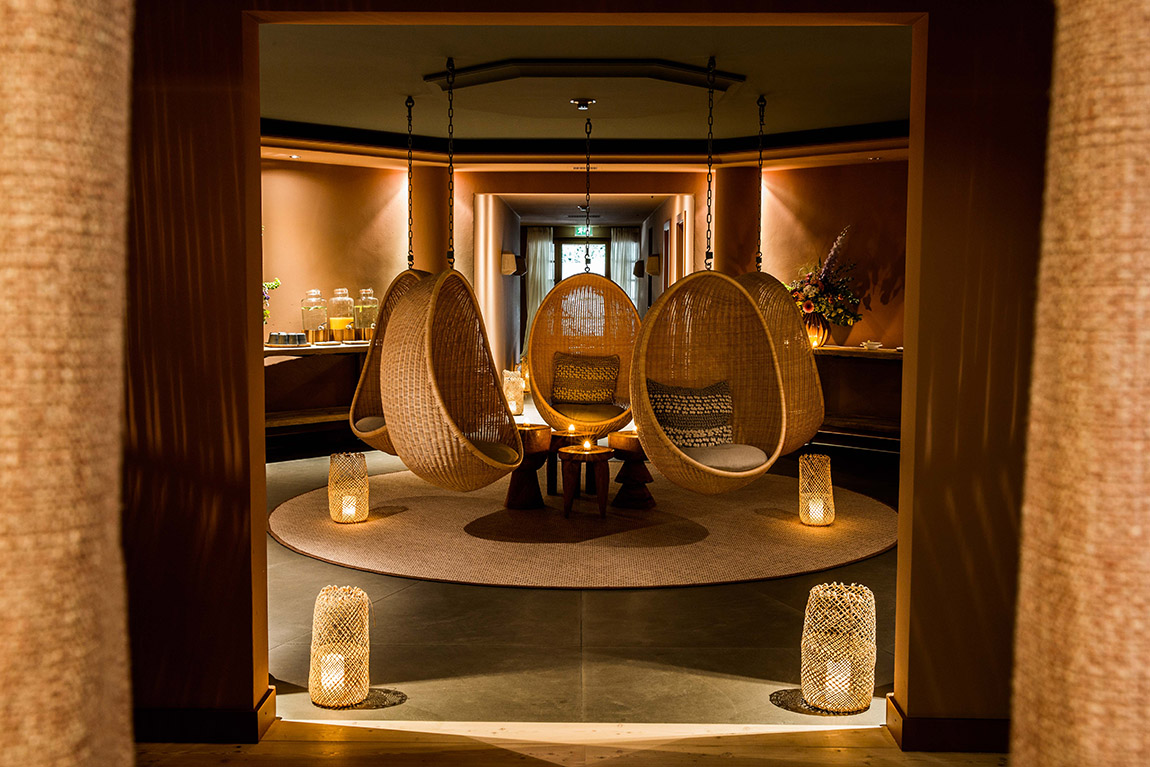
Le Grand Spa Photo: Nick Hopper
Alpine traditions
Anyone strolling through Gstaad today will see traditional wooden houses at first glance, and at second glance: Ralph Lauren, Chopard, Hermès. It’s hard to imagine that the farmers still drive their cattle through the main shopping street at the end of the summer for the ‘Züglete’ procession but alpine traditions are carefully preserved: around 200 farms and 80 alpine pastures produce Hobel cheese, Saanen mustard and dried meat from Simmental cattle. “We still have about as many cows as there are inhabitants, about 9.000,” says Roth.
Besides farming, the entire region relies heavily on tourism, almost all jobs depend directly or indirectly on it. Ueli Reichenbach has been offering horse carriage rides into the Rohr Lauenen nature reserve for over 32 years. “It’s a tough business being outdoors every day of the week in all sorts of weather,” he says. “But when we’re busy everybody pitches in: cousins, allied coachmen, and even my retired father, Ernst.”
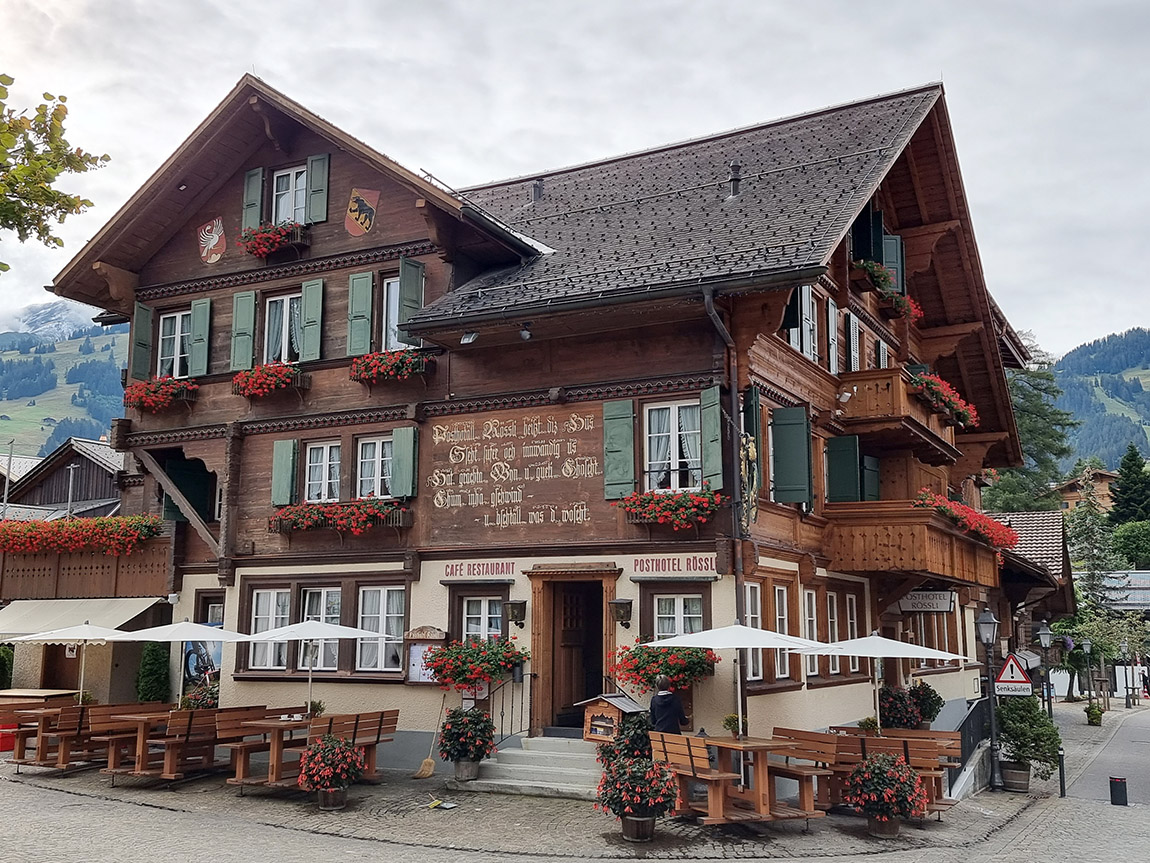
Posthotel Rössl, the oldest hotel in Gstaad. Photo: Wibke Carter
Artistic spirits
Gstaad attracts visitors all year round but December is especially magical. The British actress and honorary citizen, Julie Andrews, donated the first Christmas lights, which are still known as ‘Julie-Lämpli’, to the village in the 1970s (and paid for the electricity for the first twelve years).
In summer, around 70 concerts are held annually during July and August in Saanenland. The late American-born British violinist Yehudi Menuhin moved to Gstaad with his family in 1956 and founded a music festival named after him in the same year. In honour of the famous resident, the Yehudi Menuhin Philosophers’ Path runs between the St. Nikolaus chapel and the church in Saanen.
While traces of the rich and famous can be found in plenty around Gstaad (for example Oscar-winning actress Elizabeth Taylor donated the ‘Rosie’ cow statue), locals don’t like to talk about their famous guests. After all, they don’t want to spoil what Julie Andrews once called “the last paradise in a crazy world” with gossip.
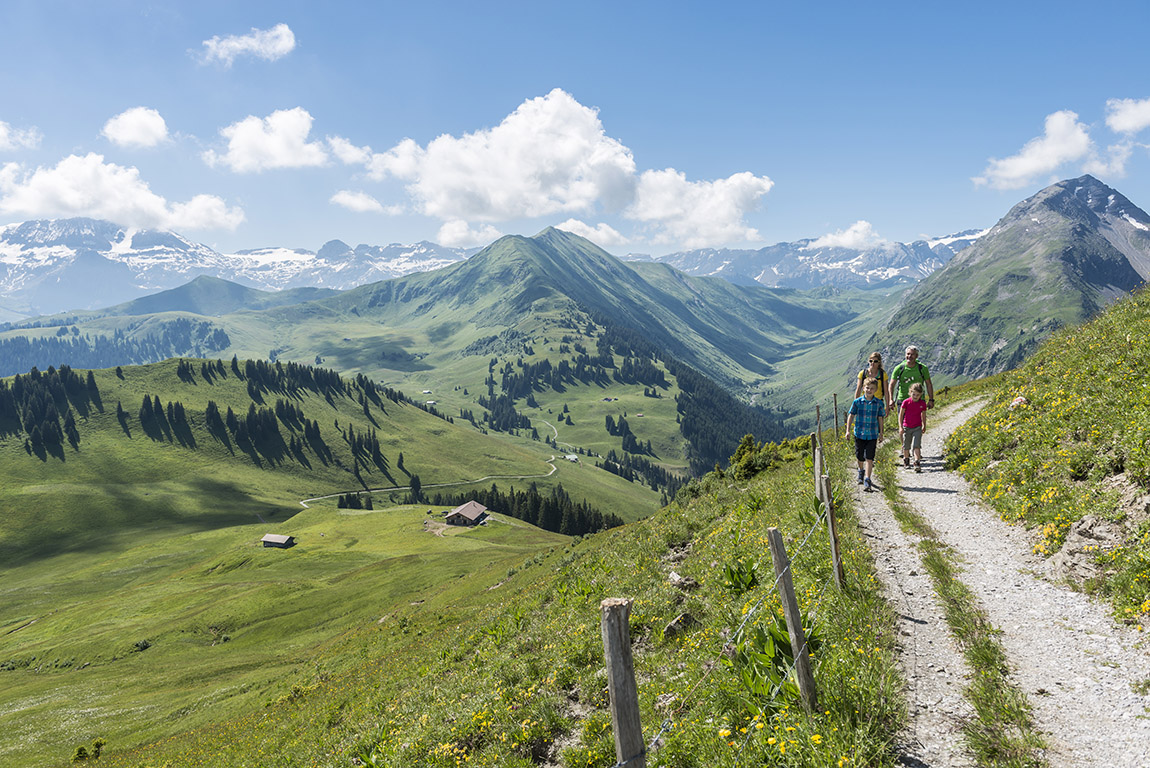
Family hiking through Saanenland. Photo: Switzerland Tourism
www.gstaad.ch
www.bellevue-gstaad.ch
www.kutscherei-reichenbach.ch
Subscribe to Our Newsletter
Receive our monthly newsletter by email

